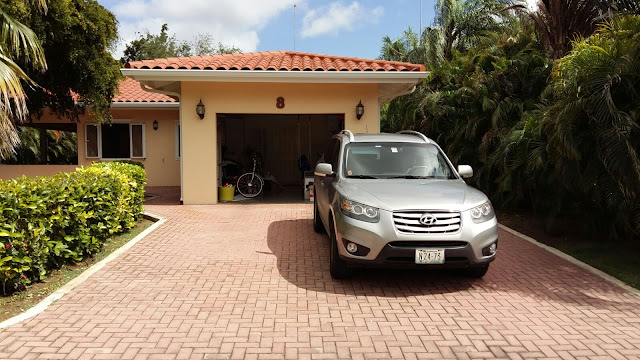The first three months on Curacao - climbing special
Having fun in Jack Sparrow


Klik hier voor Nederlandse versie
And to think I was worried about not climbing anymore after moving to Curacao…
And to think I was worried about not climbing anymore after moving to Curacao…
From where I live now, it’s five minutes driving to Roi
Rincon and some ten minutes to Piscadera. Though fledgling, the climbing scene
is very active. It’s not hard to find people to climb with. Being my own
boss also means I can climb on weekdays sometimes. Although there is less reason to, as
the climbing areas are not crowded even in the weekends. I think I managed to climb about once a week for
a couple of hours on real rock.
Let me tell you a little bit about the two areas that have
been prepared by Accion Directa, a team of foreign climbers, who started to bolt climbs here last year. The number of routes is
still small, but well-spread grade-wise (French 4 to 8) and rapidly growing.
First of all, there is Piscadera. On the way from the
airport to Piscadera and Otrabanda, this is hard to miss. It’s at the hill to
the left of the road, the one with all the antennas. It has steep wall, facing
away from the sea. On its right end, there is a large overhang. I noticed this
wall when I first arrived here, but couldn’t estimate its height because there
are no trees, just undergrowth and cactuses. From a backyard parking (be nice
to the locals living there!), a well-laid track, renovated by Stichting Uniek
Curacao and marked with yellow stones, brings you to the bottom of the cliffs.
There are three sectors. The first sector is the one which is easily visible
from the road. It has overhanging climbing only, so I’ve avoided it so far 😉
a few minutes uphill brings you to the second sector. This has a steep wall of
about 20-25 meters that starts easy but gets harder as you reach the top.
Continuing the track for a couple of 100s of meters, you reach the third sector.
This, for me, is the jewel of Curacao climbing. Vertical and exposed, you have
to explore the rock and solve the puzzle to reach the top. The hardest bits of
the routes are at the bottom. The coral limestone is raw, unpolished and very,
very sharp. It’s generally not a good idea to dyno; unless you’ve got a good
idea of what you’re going to grab at the end! Also, it’s not solid in all
places, but this to be expected as the place hasn’t seen that much climbing
yet. Wear a helmet…
Second, near the airport is Roi Rincon. This area is also
maintained by Stichting Uniek Curacao. They have laid a multitude of tracks; again, marked with yellow stones; making it a very nice destination for
hiking as well! You can get there by car, parking near the spring and following
the shallow valley. After the valley curves right, you arrive at the “totem”; a
steep limestone tower right of the track. Near this is a collection of routes,
some easy and some harder. When looking at the valley walls, it’s not hard to
imagine there is potential for lots of climbing and bouldering. The climbs are
shorter than in Piscadera (up to 10 meters) but also steeper. The climbs often feature lots
of pockets.
The bolts generally look good. But there are places –
especially at the top of the Piscadera wall – where corrosion progresses very quickly, even with
marine grade steel. Bolts that have been in some locations for a few months
look like they’ve been there for over 10 years. To cut a long story short I’m in
the process of arranging titanium bolts. These can “face the music”, as they’ve
been designed for the aggressive conditions of the marine tropical climate.
It’s an expensive business, though; but the NKBV (Dutch Mountaineering
Association) has been kind enough to lend financial support to this initiative.
This is something I’m very excited about!
After climbing here a couple of times, personally, the quick
conclusion is; I need more stamina 😊 therefore, I started work recently on my
indoor climbing wall, which I brought with me from the Netherlands. The first
phase of this was concluded just after I returned to Curacao again. There is
now a series of panels of plywood going to the top of my living room, some 4.8
meters. Quite high, so there is also an anchor at the top with a rope. There is
much more to come though!
If you’ve read my earlier post, you know I have plans to
bolt routes myself. I also brought the equipment, skills and knowledge. The Fort
Beekenburg area, which I viewed when I got here, is still on my list; but I am
long overdue to take a look at Seru Kabritu, which is near to it. This has been
at a standstill for a while, but it’s a fitful sleep… I will report it as soon
as there is “movement”. All this would not be possible without Stichting Uniek
Curacao, who manages these natural areas and views climbing favorably.
So, to summarize, if it comes to climbing, my first three
months on Curacao feels like being in a candy store and trying to figure out
what tastes best!
Jona at the "totem" and the indoor climbing wall






Reacties
Een reactie posten